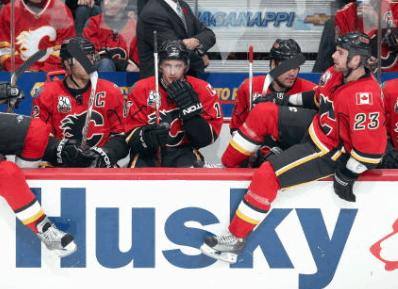Understanding Player Shifts in Hockey
Hockey is distinct from many team sports because it permits players to substitute during live action, without waiting for play to stop. This ongoing flow of the game is crucial to strategic gameplay and team dynamics.
Timing the Shift Changes
Hockey players know when to change based on several factors:
- Shift length: Players typically skate in shifts lasting anywhere from 45 to 90 seconds to maintain optimal energy and performance levels.
- Coordination with line mates: Players often switch as a group, ensuring that fresh legs are on the ice while maintaining team synergy.
- Strategic matchups: Changes are sometimes made to counter specific opponents on the ice, aiming to gain a tactical advantage.
- Safe timing: Players aim to switch only when doing so won’t risk a potential scoring opportunity for the opposing team.
Optimal Shift Durations in Hockey
In professional hockey, the typical duration of a player’s shift on the ice is approximately 45 seconds. This brief period is crucial as it reflects the intense nature of the sport which demands high energy and stamina. After this time, a player’s performance may decline noticeably without a break. Hockey players, through experience, develop an intuitive understanding of when to switch out to maintain their efficacy, generally between 30 to 45 seconds.

The sport’s rigorous pace means players burn a significant number of calories, and the intensity of their skating during this short time is a testament to their physical commitment. On special teams like the power play, players might extend their time on the ice slightly longer, usually up to a minute, as the focus shifts more towards puck control and less on constant movement. Conversely, during penalty kills, frequent changes every 30 seconds are common due to the exhaustive nature of chasing the puck.
Team Coordination in Hockey Shift Changes
In professional hockey, players typically change shifts in sync with their linemates. A forward line consists of three players: left wing, center, and right wing. Similarly, defense pairs are made up of two players: left and right defensemen.
Coaches strategically group these players to optimize team performance, with each line or pair having specific roles. For example, forward lines are often organized into four categories:
- Top Scoring Line: Primarily aims to score goals.
- Second Scoring Line: Also focuses on scoring but may have additional tactical duties.
- Shutdown Line: Specializes in neutralizing the opponent’s top scorers.
- Checking/Energy Line: Concentrates on aggressive play and maintaining team momentum.
Players are instructed to shift off the ice as a unit to maintain the effectiveness of these predefined roles. This coordination ensures that the team operates smoothly and adheres to the tactical game plan laid out by the coaches.
Strategic Line Changes in Hockey
Line changes in hockey are a critical part of game strategy, designed to optimize team matchups against opponents. Players switch on and off the ice to align with tactical plays, ensuring that their team has the best possible advantage at any given moment.
For example, if a team’s offensive-focused line faces off against a superior offensive line from the opposing team, a strategic change might be made. Instead of persisting with a less favorable matchup, the team might swap to a defensive line, known as the shutdown line, which specializes in counteracting the opponent’s top scorers.
The timing of these changes is also crucial. Players must ensure they switch only when it is safe, meaning there is minimal risk of giving the opposing team a scoring opportunity. This often happens when the puck is deep in the opponent’s end, far from their own goal. Players might drive the puck across the red line and into the opponent’s zone before heading to the bench, a move that reduces the risk of icing and prepares the team for a safe line change.
Coaches stress the importance of disciplined line changes because poor timing can lead to scoring opportunities for the opposition. The principle is clear: ensure that changes are made without putting the team at a disadvantage. In practice, this might mean that not all players change at once—depending on the game’s flow, only one or two might switch at a time to maintain defensive stability.
Overall, strategic line changes are fundamental to controlling the game’s pace and outcome, reflecting the depth of strategy inherent in professional hockey.

Line Changes in Recreational Hockey
Line changes in recreational hockey share similarities with professional levels like the NHL, though there are notable differences tailored to the casual or developmental nature of these games.
Timed Shifts: At beginner levels, shifts are often regulated by a buzzer signaling a two-minute duration, after which all players are required to change. This ensures that shifts are consistent and fair across the team.
Coach Involvement: Coaches in recreational leagues play a more active role in managing line changes, particularly with younger players who might linger on the ice too long. Their goal is to ensure equal playing time, contrasting with competitive levels where more skilled players may receive more ice time.
Pick-Up Games: In adult recreational or pick-up games—like the ones I participate in—shift lengths are generally self-monitored, typically around one minute. It’s important to adhere to these informal rules to maintain fairness and team morale, as overly long shifts can frustrate other players and disrupt the game’s flow.
Structured Play:
- Time on Ice: Players should monitor their own time on the ice, aiming for shifts of 30 to 60 seconds to keep play energetic and inclusive.
- Coaches’ Instructions: Coaches may use verbal cues or hand signals to direct players when to change lines, ensuring everyone is aware of when their shift ends.
- Line Chemistry: Players often know their line rotation and change when their specific group does, maintaining the strategy and chemistry of the team setup.
- Bench Awareness: Those on the bench watch the game and their teammates’ shifts closely, preparing to take their turn promptly.
- Play Stoppages: During pauses in the game, such as penalties or icings, players often take the opportunity to change lines smoothly and refresh the lineup on the ice.
These elements of line changes at the recreational level help maintain the sport’s integrity and enjoyment for all participants, from beginners to seasoned amateurs.
Read Also: Why Do Hockey Players Dress in Suits?
Conclusion
Player rotations in hockey, spanning from elite professional competitions to casual recreational games, play a crucial role in preserving team energy and strategic advantage. These rotations are vital for ensuring that players perform optimally, match strategically against opponents, and uphold fairness and engagement throughout the game. Through well-planned shifts, coaching guidance, or self-regulation during play, the skillful management of line changes is key to maintaining the sport’s excitement and achieving collective success.
FAQ’s: hockey players know when to change
How do players manage their ice time during games?
Players develop an intuitive understanding of their time spent on the ice through training and experience. They also receive support from teammates and coaches who may provide reminders about time management as necessary. This collaboration ensures players optimize their performance without overstaying their shifts.
Is it permissible for players to prolong their shifts unnoticed?
Players are generally required to stick to designated shift durations and comply with coaching directives. Prolonging shifts without approval can disrupt the team’s strategy and lead to fatigue, making it typically discouraged.
What are the consequences of not switching lines promptly?
While there are no explicit penalties for failing to switch lines timely, such delays can lead to on-ice miscommunication and a shortage of rested players. This often results in extended shifts that negatively affect team performance.
What are the repercussions of a player entering the ice prematurely?
If a player enters the ice before their teammate exits, it leads to a “too many men on the ice” penalty. This infraction results in a minor penalty for the team, and the player responsible must serve the time in the penalty box.
Are there established shift patterns for players?
Teams often utilize flexible shift patterns, dictated by the coach’s strategy which may vary with the game’s context, opponent, and line chemistry. This adaptability helps teams respond to shifts in momentum and leverage advantageous matchups.
What communication methods do players use for line changes on the ice?
Players employ both verbal and non-verbal cues for line changes, including tapping their stick on the ice or calling out a teammate’s name. These signals facilitate smooth transitions during the game’s rapid pace.
Is it mandatory for players to change lines during game stoppages?
No, line changes do not always occur during stoppages. Teams might opt to keep the same players on the ice to sustain offensive pressure and delay changes until a more strategic moment or following a potential scoring opportunity.



